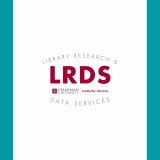Interfaith Lessons from the Art Collections in Lahore Lecture in partnership with Sikhlens
October 2, 2019
Since 2013, the Leatherby Libraries has enjoyed collaborating with Sikhlens, The World’s Premier Sikh Film Festival, an organization based in Orange County focused on showcasing talent from the Sikh community and educating the community at large about Sikhs and Sikhism. From showcasing some of the festival’s excellent art exhibits to helping kick off each November’s film festival, the Leatherby Libraries and Sikhlens prize our partnership. Earlier this week, we continued that partnership by hosting a lecture sponsored by Sikhlens by Anjum Javaid, curator of the Lahore Fort in Pakistan. Javaid’s lecture was titled “Guru Nanak’s Interfaith Message,” and he combined his discussions of the art collections at Lahore, including the famous Princess Bamba Collection, with important lessons about the interfaith, universal tenets of the Sikh faith and the history of the region.
Javaid began his lecture by recounting the history of the Sikh faith, and its origins in the first half of the 16th century with Guru Nanak, who proclaimed that, rather than there being a true division between Hindus and Muslims, all people are one. The faith that Guru Nanak started, as Javaid emphasized, has always been focused on the equality of all people, regardless of religion, caste, or cultural or ethnic background. The Punjab province of Pakistan, where the Lahore Fort is located, has been the site of much of Pakistan’s government’s recent efforts to promote Sikh-Muslim unity, both because of its geographical location and its religious significance in both faiths. All of us today, Javaid emphasized, can learn much from the interfaith teachings of Guru Nanak.
Javaid’s lecture then turned to two of the notable art collections at Lahore Fort, the Armory Sikh Gallery, and the Princess Bamba Collection. The Armory consists of a unique collection of arms and weapons used by the Sikh Army during the 18th and 19th centuries. The collection ranges from simpler weapons, like bows and arrows, to full-fledged artillery cannons, and also contains paintings and lithography prints depicting battles between the Sikh and British armies. The Princess Bamba Collection is comprised of arts, crafts, and paintings owned by Sikh rulers and their families. The collection initially belonged to Maharaja Ranjit Singh (1780-1839), and left Lahore when his son, Maharaja Dalip Singh was exiled to England in 1849. The collection was later inherited by his daughter, Princess Bamba, the last member of the Sikh royal family, who returned to Lahore as a young adult, and left the collection to the museum when she died in 1957. Throughout, Javaid continued to emphasize the importance of an interfaith understanding of the history of the Punjab region, Lahore Fort, and its art collections.




